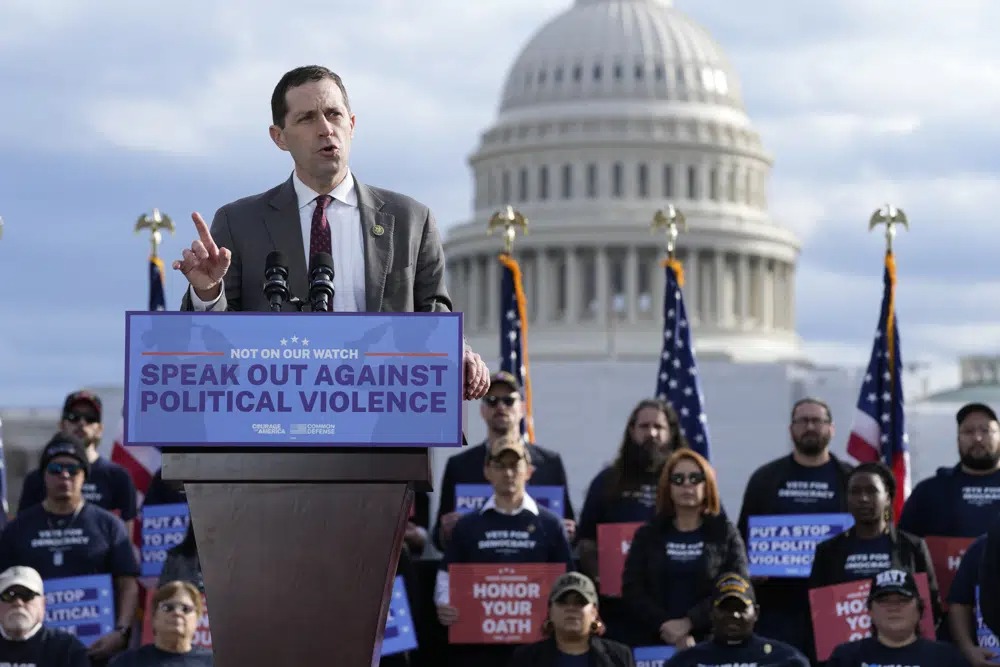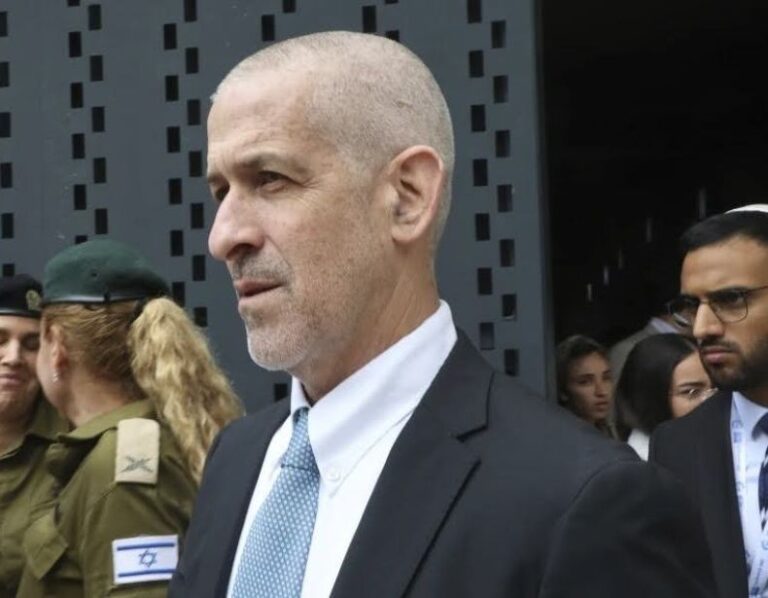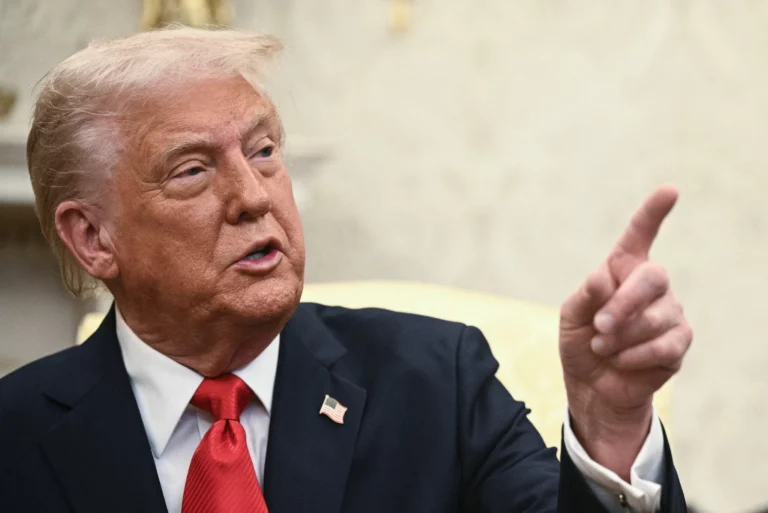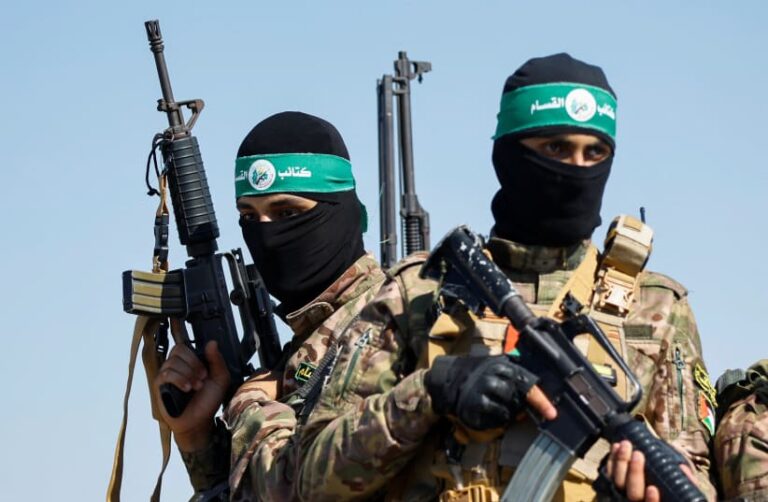In his U.S. Capitol office, Rep. Jason Crow keeps several war mementos. Sitting on a shelf are his military identification tags, the tailfins of a spent mortar and a piece of shrapnel stopped by his body armor.
Two decades ago, Crow was a 24-year-old platoon leader in the American invasion of Iraq. Platoon members carried gas masks and gear to wear over their uniforms to protect them from the chemical weapons the U.S. believed — wrongly — that Iraqi forces might use against them.
Today, Crow sits on committees that oversee the U.S. military and intelligence agencies. The mistakes of Iraq are still fresh in his mind.
“It’s not hyperbole to say that it was a life-changing experience and a life frame through which I view a lot of my work,” the Colorado Democrat said.
The failures of the Iraq War deeply shaped American spy agencies and a generation of intelligence officers and lawmakers. They helped drive a major reorganization of the U.S. intelligence community, with the CIA losing its oversight role over other spy agencies, and reforms intended to allow analysts to better evaluate sources and challenge conclusions for possible bias.
But the ultimately incorrect assertions about Iraq’s nuclear, biological and chemical weapons programs, repeatedly cited to build support for the war in America and abroad, did lasting damage to the credibility of U.S. intelligence.
As many as 300,000 civilians died in two decades of conflict in Iraq, according to Brown University estimates. The U.S. lost 4,500 troops and spent an estimated $2 trillion on the Iraq War and the ensuing campaign in both Iraq and Syria against the extremist Islamic State group, which took hold in both countries after the U.S. initially withdrew in 2011.
Those assertions also made “weapons of mass destruction” a catchphrase that’s still used by rivals and allies alike, including before the Russian invasion of Ukraine, which U.S. intelligence correctly forecast.
Avril Haines, the current U.S. director of national intelligence, noted in a statement that the intelligence community had adopted new standards for analysis and oversight.
“We learned critical lessons in the wake of our flawed assessment of an active WMD program in Iraq in 2002,” Haines said. “Since then, for example, we have expanded the use of structured analytic techniques, established community-wide analytic standards, and enhanced tradecraft oversight. As in every part of our work, we strive to learn the lessons that allow us to preserve and advance our thinking to greater effect in service of our national security.”
Only 18% of U.S. adults say they have a great deal of confidence in the government’s intelligence agencies, according to a new poll from The Associated Press-NORC Center for Public Affairs Research. Forty-nine percent say they have “some” confidence and 31% have hardly any confidence.
Shortly after the Sept. 11, 2001, terrorist attacks, President George W. Bush ordered an invasion of Afghanistan, where the ruling Taliban sheltered al-Qaida leader Osama bin Laden and allowed the group to run training camps.
Bush’s administration soon began to warn about Iraq, which was long seen as threatening American interests in the Middle East.
Iraq was known to have sought a nuclear weapon in the 1980s and had chemical and biological weapons programs by the end of the Gulf War in 1991. It had been accused of concealing details about those programs from international inspectors, before they were kicked out in 1998.
The Bush administration argued Saddam Hussein’s government was still hiding programs from inspectors after they reentered the country in 2002 and found no signs of resumed production.
A U.S. intelligence estimate published in October 2002 alleges that Iraq had considered buying uranium from Niger and aluminum tubes for centrifuges, that it was building mobile weapons labs, that it was considering using drones to spread deadly toxins, and that it had chemical weapons stockpiles of up to 500 tons.
Some U.S. officials also suggested Iraqi officials had ties to al-Qaida leaders despite evidence of deep antipathy between the two sides.
Those claims would largely be debunked within months of the invasion. No stockpiles were found. Subsequent reviews have blamed those claims on outdated information, mistaken assumptions, and a mix of uninformed sources and outright fabricators.
Bush repeated wrong U.S. intelligence findings before the war, as did Secretary of State Colin Powell in a landmark February 2002 speech before the United Nations.
“He said he’d go to his grave with the manacles of Iraq,” said retired Col. Larry Wilkerson, who was then Powell’s chief of staff and later became a high-profile critic of the Bush administration. Powell died in 2021.
It’s still sharply debated whether the Bush administration would have ordered the invasion without the WMD intelligence.
A White House spokesperson told The Washington Post in 2006 — as Iraq had fallen into a violent insurgency — that Bush “made his decision to go to war in Iraq based on the intelligence given to him by the intelligence community.”
Some former intelligence officials argue the Bush administration stretched available information to make the case for war, particularly on allegations of ties between Iraq and al-Qaida.
Congress was already debating wholesale change to the U.S. intelligence community after the Sept. 11 attacks, an intelligence failure blamed in part on a lack of information sharing between the CIA and FBI.
Lawmakers in 2004 created the U.S. Office of the Director of National Intelligence to oversee the other agencies, taking that leadership function away from the CIA. ODNI took control of the daily intelligence briefing given to the president and of the National Intelligence Council, comprised of the spy community’s top analysts.
Supporters say ODNI can arbitrate among the other agencies, which often have sharply different skillsets and cultures. Others criticize ODNI as an unnecessary bureaucratic layer.
The CIA revamped its training program for analysts to emphasize the study of alternatives and use of “red teams” that challenge conclusions. It also forced more information sharing so analysts could better evaluate the sources of specific reports.
Michael Allen, who served in the Bush White House and wrote the book “Blinking Red” about the 2004 intelligence overhaul, said U.S. officials in the wake of Iraq are more likely to accept differences of opinion within intelligence.
Allen noted as an example the Energy Department’s recent assessment that the COVID-19 virus likely leaked from a Chinese lab. The FBI also supports the lab leak hypothesis, but other agencies say the virus likely was transmitted from animals to humans or have declined to take a position.
The U.S. learned to “not take intelligence at face value, but to really examine the basis upon which the conclusions were made and to listen to differing views among different agencies in the intelligence community,” said Allen, now managing director of Washington-based Beacon Global Strategies.
Ukraine has been a bright spot for U.S. intelligence. The Biden administration has supplied information to Kyiv for Ukraine to bolster its defenses and declassified intelligence findings on Russian intentions to try to influence Moscow and build allied support.
And while they correctly predicted Russia’s intention to invade, the spy agencies wrongly believed Ukraine’s forces would fall within weeks.
While in Congress, Crow has pressed the agencies to review how they assess a foreign government’s ability to fight. U.S. intelligence two years ago wrongly projected the Washington-backed government in Kabul would survive months after the American withdrawal from Afghanistan.
“We’ve lived with the ghosts of Iraq for two decades and it’s impacted our credibility,” Crow said. “Now we’re starting to find it again. It’s a great opportunity for us to learn lessons of the past and do it better going forward.”
But those ghosts remain. Sitting in his office for a recent interview, Crow said he understands the limits of what a military can do and the importance of using armed forces properly. He said he thinks about his enrolling in the Wisconsin National Guard after high school as a private and moving to active duty after Sept. 11.
He pointed to a photo on a wall opposite the shelf with his Iraq War mementos, a picture of his company at Fort Bragg, an Army base in North Carolina, before they went to the Middle East.
“There’s men in that picture who died, who aren’t here anymore,” he said. “I think about those guys, too.”
(AP)











